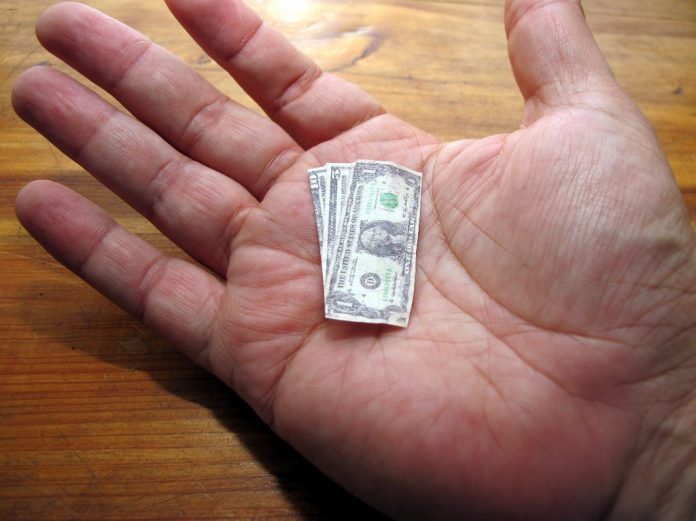Business surveys into April continue to show the economy holding up well in the face of global disruptions. The full impact of supply-side shortages caused by China’s lockdown and the war in Ukraine remains a key unknown. Soaring inflation continues.
The Week That Was
This week’s April inflation reports showed no relief from soaring inflation.
April’s total CPI index slowed to a 4 percent annual rate while the monthly CPI ex-food and energy increased at a 7 percent annual rate.
Total consumer prices were up 8 percent for the year. The yearly increase without food and energy was 6 percent.
April wholesale prices for finished goods were up at a 10 percent annualized rate but up 20 percent over the past year.
Initial weekly unemployment claims are drifting slightly higher. Claims hit a low in March of 175,000, then rose to 188,000 in April, with the past two weeks at 202,000.
Although the upward move is fairly modest, it could easily be an early sign of developing problems from a shortage of key raw
materials.
My visit to auto dealers this past week showed no letup in the problems many dealers are having in getting cars. Their latest concern is suppliers unable to get the raw materials needed to produce key components.
While manufacturing is vulnerable to a shortage of materials, the service sector provides a much larger share of the economy’s output and can help sustain growth.
In one of the more bizarre suggestions, some are proposing containing inflation by freezing new hirings. The idea is to reduce the demand for workers by not hiring new ones. This nonsense is based on the misguided view that higher wages cause inflation. The cause of inflation is always too much money chasing too few goods. Inflation is caused by government policies, not workers. Workers are simply trying to protect themselves from the effect of government policies.
Things to Come
Economic reports this coming week can provide additional information on the extent to which supply-chain problems are curtailing growth. The most significant reports are due on Tuesday. They include April retail sales and industrial production as well as the May Homebuilders’ Index.
March retail sales were up at a 9 percent annualized rate. April retail sales numbers could be weak due to a temporary drop in energy prices. We expect the gain to be just under ½ percent.
The Fed’s March industrial production estimate increased by a strong 0.9 percent. Business surveys for April indicate manufacturing output continued to expand in April, albeit at a slightly slower pace. We expect the Fed’s measure to show growth in the vicinity of just under ½ percent.
The May report from Homebuilders provides the earliest indication of a possible slowdown in housing activity due to rising mortgage rates. Homebuilders were still very optimistic in early April, with a reading of 77 (50 is break-even). The April reading was down from 84 in December. An index reading in the mid-70s would suggest the housing market remains fairly strong.
To Market, to Market
The bloodbath on Wall Street has taken the Nasdaq and other indexes down almost 30 percent from their highs.
Among the better relative performers, the S&P500 is down 18 percent and the Dow 14 percent.
The economic news is mixed. The April business surveys show a sharp decline in output in China and Russia. Much of the rest of the world, including the United States, continues to grow at a moderate pace amid rapid inflation.
The stock market’s technical signals remain very negative. My technical guru, Joe Barto, wrote about major support for the S&P500 at about 3800. The index fell to a low of 3840 yesterday before rebounding to 3930. Although this could be the bottom, no one can say for certain whether it is.
On a positive note, the IBD ratio of bulls to bears is just about where it was in late March, 2020, during the worst fears of the Covid outbreak. Amid such extreme pessimism markets often change direction.
Stocks often reflect the collective wisdom of all investors. If so, they are pointing to a much weaker economy than our forecast suggests. The key unknown is how badly shortages of food, diesel fuel, and other raw materials will slow both the economy and spending. If the economy stalls or dips into a downturn, there will be some relief from inflation, but at a serious cost in jobs.
With China, Russia, and Ukraine creating supply-side problems, our forecast is for the economy to weaken this summer without going into a downturn.
By the end of the summer, the economy will either be soft with continued high inflation or will be flat to down with some relief on prices. Neither scenario is very attractive.
Outlook
Economic Fundamentals: weakening
Stock Valuation: S&P 500 overvalued by 19 percent
Monetary Policy: expansive
For more Budget & Tax News articles.
For more from The Heartland Institute.











